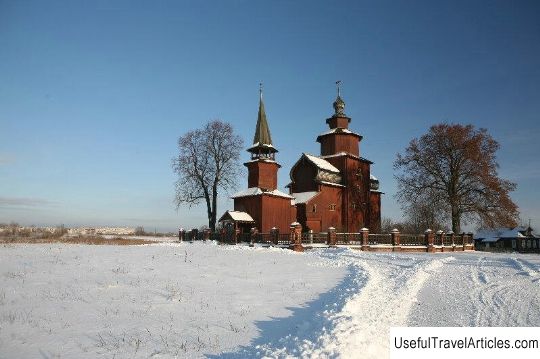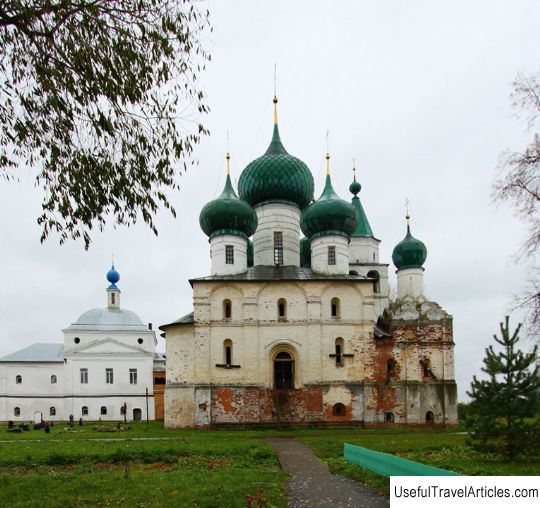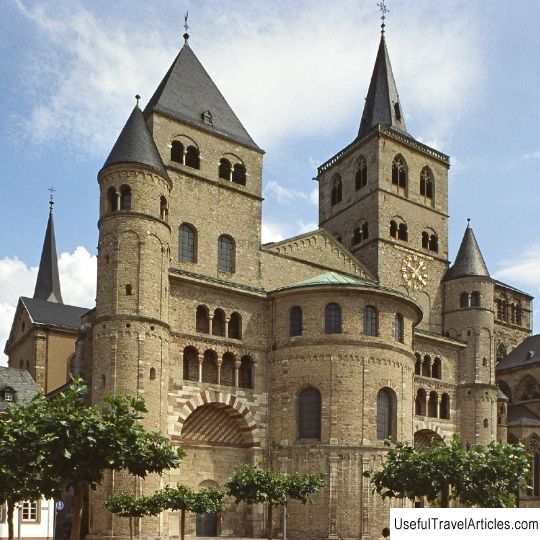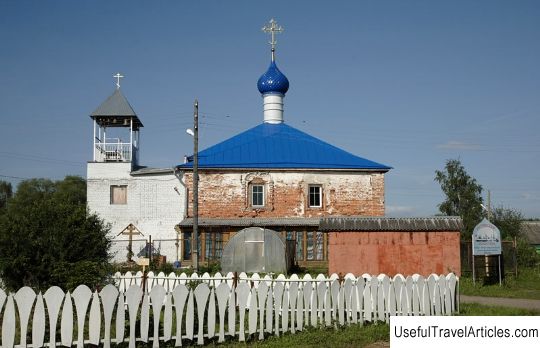Avraamiev Epiphany Monastery description and photos - Russia - Golden Ring: Rostov the Great
Rating: 9,3/10 (565 votes) 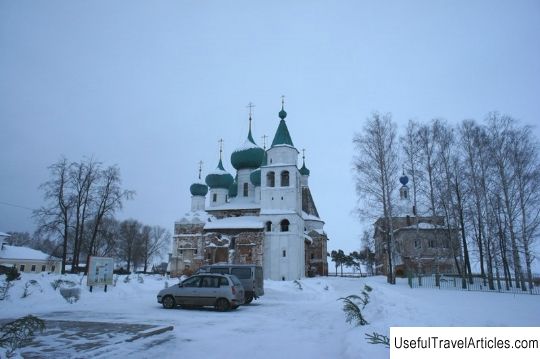
Avraamiev Epiphany Monastery description and photos - Russia - Golden Ring: Rostov the Great. Detailed information about the attraction. Description, photos and a map showing the nearest significant objects. Photo and descriptionThe Epiphany Avraamiev Monastery is one of the most ancient in Rostov the Great. The monastery is located on the shores of Lake Nero. The monastery was founded in the late 11th - early 12th centuries. Abraham of Rostov, who settled on the shore of the lake, near the pagan temple where the idol of Veles stood. According to legend, the Monk Abraham, who wanted to crush the idol, after seeing him went to Constantinople. Moving away from Rostov, near the ferry near Ishni, he met John the Theologian, who handed him a wonderful staff. With this staff Abraham destroyed the idol, and on Ishna he built a church in honor of John the Theologian. On the site of the pagan temple, where he destroyed the idol, Abraham founded the Epiphany temple. The believers who wanted to stay with him immediately went to the monk; So on the shore of Lake Nero a monastery appeared, which existed for many centuries until 1915. In the 15th century. Abraham of Rostov was canonized, although his relics have been venerated since the end of the 12th century. Until the 16th century. the monastery buildings were wooden. Only in 1553, by order of Ivan the Terrible, was built a monumental Cathedral of the Epiphany with several aisles, which is the same age as the Moscow Cathedral of St. Basil the Blessed. The temple in the monastery was also built in honor of the capture of Kazan by the Russian army. The attention shown by the tsar to the Abraham monastery is not accidental. According to the monastery chronicle, the tsar, going to Kazan, took on a campaign the shrine of the monastery − the staff of John the Theologian, which was kept here along with the relics of Abraham. There is a version, which is not confirmed by historical documents, that that for the construction of the temple Ivan the Terrible sent the master Andrey Mal & oacute; go. The Epiphany Cathedral is a four-pillar high building topped with five chapters. It stands on a high basement, expanded by a gallery from the south, like many Yaroslavl temples. The Yaroslavl architectural style also manifested itself in the fact that a bell tower is installed in the south-western part of the gallery, and a side-chapel completes the eastern part. There are three chapels in the church, which are dedicated to John the Theologian, Abraham of Rostov, John the Baptist. The southeastern chapel in honor of Abraham of Rostov, which is crowned with a beautiful tent, stands out especially. In the side-chapel - the relics of St. Abraham, with his cross from a miraculous rod and the cap of an archimandrite. The cathedral was rebuilt more than once, a bell tower was built on and, obviously, the above drums were made. The figured pozakomarnoe covering, which gave the cathedral aspiration upward, was replaced by a simple hipped roof. But this did not prevent the cathedral from preserving its former grandiose and majesty. When the future Rostov Metropolitan Iona Sysoevich was the abbot of the monastery, a second stone church was built in the monastery − Vvedenskaya. It dates back to 1650. This is an ordinary classical refectory monastery church, in plan it is quadrangular, with one head and an eight-slope roof, it was built of large-sized bricks. Most likely, initially it was connected with the Epiphany Cathedral by a passage-gallery. which was later taken apart. In the basement of this church, the grave of Schema-monk Sysoi, Jonah's father, has been preserved. In 1691. with funds donated by the boyars Meshcherinovs, a gateway church was built in honor of St. Nicholas. In the middle of the 19th century. this church was heavily rebuilt. The abbot building and the refectory chamber of 1892 have also survived on the territory of the monastery. The fence of the monastery has hardly survived, which was erected in the 18th century. In Soviet times, the chapel over the grave of Elder Pimen was destroyed. According to legend, Pimen was an ascetic and a recluse, he did not take off his chains until the end of his life. With his prayers, he healed the merchant Khlebnikov from migraine, and he, in gratitude after the death of the elder, built a chapel over his grave. The old man's chains, weighing about 25 kg, and weights were preserved in the monastery. Some pilgrims, having put on these chains, walked around the Pimen chapel three times. The monastery was visited at different times by members of the royal family, the future Patriarch Tikhon, John of Kronstadt. In 1915, the reduced brethren were transferred to the Spaso-Yakovlevsky Monastery, and sisters from the Belarusian Polotsk Monastery entered the monastery buildings, bringing with them the relics of Abbess Euphrosyne, the founder of their monastery. A little later, the nuns returned to Polotsk. In Soviet times, valuables were removed from the monastery, some of the cells were occupied by working apartments. In 1929, services in the monastery churches were banned, the relics of Abraham were transferred to the museum. Many monks were arrested and repressed. The Epiphany Cathedral was given over to a grain warehouse, first a kindergarten, then a sanatorium, and then − sobering-up station. In the 1990s, churches and monastery buildings were in a deplorable state. In 1994, some of the buildings were transferred to the Moscow patriarchal courtyard; Nikolskaya Church was then opened as a parish. Today the buildings of the monastery are coming back to life.        We also recommend reading Warszawska Syrenka description and photos - Poland: Warsaw Topic: Avraamiev Epiphany Monastery description and photos - Russia - Golden Ring: Rostov the Great. |
